
A First-Class Catastrophe: The Road to Black Monday, the Worst Day in Wall Street History
by
Diana B. Henriques
Published 18 Sep 2017
Clowes, The Money Flood: How Pension Funds Revolutionized Investing (Hoboken, NJ: John Wiley and Sons, 2000), pp. 84–92 and 198–200; Kate Ancell, “The Origin of the First Index Fund,” University of Chicago Booth School of Business, 2012, http://www.crsp.com/files/SpringMagazine_IndexFund.pdf; and Fox, The Myth of the Rational Market, pp. 137–41. that has had a greater impact on American markets: Indeed, Madrick, Seven Bad Ideas, nominates it as one of his “Seven Bad Ideas.” this innovative team was road-testing index funds: Bernstein, Capital Ideas, pp. 234–35; and Fox, The Myth of the Rational Market, p. 127. measuring pension fund performance: Interview with Kelly Haughton, July 8, 2015. Haughton, a notable financial engineer who worked at WFIA in the late 1970s, had even closer ties to the finance professors at Berkeley: his young wife was the department’s secretary, he frequented campus social events with Hayne Leland and his faculty colleagues, and occasionally a friend who worked for Barr Rosenberg invited him over to brew beer in Professor Rosenberg’s basement.
…
after earning a doctorate in economics: Sandor, Good Derivatives, p. 17–18. such as the daily prices on America’s stock markets: Ibid. mathematical ideas to guide investment strategies: The evolution of quantitative analysis from an academic specialty to a force in the modern market is ably told by Justin Fox, The Myth of the Rational Market: A History of Risk, Reward, and Delusion on Wall Street (New York: Harper Business, 2011); Peter Bernstein, Capital Ideas: The Improbable Origins of Modern Wall Street (Hoboken, NJ: John Wiley and Sons, 2005); David Leinweber, Nerds on Wall Street: Math, Machines and Wired Markets (Hoboken, NJ: John Wiley and Sons, 2009); Richard Bookstaber, A Demon of Our Own Design: Markets, Hedge Funds, and the Perils of Financial Innovation (Hoboken, NJ: John Wiley and Sons, 2007); Jeff Madrick, Seven Bad Ideas: How Mainstream Economists Have Damaged America and the World (New York: Alfred A.
…
By the late 1970s, Rosenberg’s “quantitative models,” which Wall Street nicknamed “Barr’s Bionic Betas,” had made him a multimillionaire and put him on the cover of Institutional Investor magazine, which featured a cheeky article by Chris Welles headlined “Who Is Barr Rosenberg? And What the Hell Is He Talking About?” (In finance, beta is defined as the measure of a stock’s sensitivity to the movements of the overall market.) See Bernstein, Capital Ideas, pp. 256–68, 275, 280–82; and Fox, The Myth of the Rational Market, pp. 127, 138–40, 151, 224, and 326–27. After a long and influential career, he stunned the quantitative world by running afoul of the SEC by allegedly failing to disclose a software glitch that arose in one of his fund management programs. On September 22, 2011, the SEC announced that Rosenberg, without admitting or denying its allegations, had agreed to be barred from the securities industry and to pay $2.5 million to settle the case.
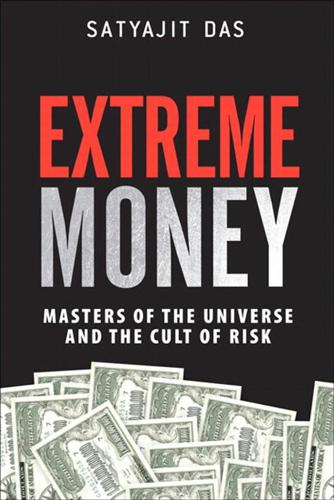
Extreme Money: Masters of the Universe and the Cult of Risk
by
Satyajit Das
Published 14 Oct 2011
Alan Greenspan (2007) The Age of Turbulence: Adventures in a New World, Allen Lane, London: 124. 30. Fox, The Myth of the Rational Market: 41. 31. MacKenzie, An Engine, Not a Camera: 95. 32. Ibid: 8–12. 33. van Overtveldt, The Chicago School: 67. 34. Dan Gardner (2008) Risk—The Science and Politics of Fear, Virgin Books, London: 53. 35. van Overtveldt, The Chicago School: 291. 36. Quoted in Greenspan, The Age of Turbulence: 55. 37. Quoted in van Overtveldt, The Chicago School: 172. 38. Quoted in Fox, The Myth of the Rational Market: 269. 39. Daniel Altman “Managing Globalization: Q & A with Joseph Stiglitz” (11 October 2006) The International Herald Tribune. 40.
…
Philip Mirowski (2002) Machine Dreams: Economics Becomes a Cyborg Science, Cambridge University Press, Cambridge: 203, 204. 10. Johan van Overtveldt (2007) The Chicago School: How the University of Chicago Assembled the Thinkers Who Revolutionised Economics and Business, Agate Books, Chicago: 9. 11. Ibid: 91. 12. Justin Fox (2009) The Myth of the Rational Market: A History of Risk, Reward and Delusion on Wall Street, Harper Business, New York: 252. 13. van Overtveldt, The Chicago School: 85–7. 14. Pierre Bayard (2007) How to Talk About Books You Haven’t Read, Bloomsbury, London. 15. Yergin and Stanislaw, The Commanding Heights: 89. The quote is derived from John Ranelagh’s book, (1991) Thatcher’s People: an insider’s account of the politics, the power, and the personalities, Harper Collins, London.
…
Ben S. Bernanke, Remarks at the Conference to Honor Milton Friedman (8 November 2002), University of Chicago, Chicago, Illinois. 32. Frank Knight “What is truth in economics?” (1940) Journal of Political Economy. Chapter 8—False Gods, Fake Prophecies 1. Quoted in Justin Fox (2009) The Myth of the Rational Market: A History of Risk, Reward and Delusion on Wall Street, Harper Business, New York: 79. 2. Donald MacKenzie (2008) An Engine, Not a Camera: How Financial Models Shape Markets, MIT Press, Cambridge, Massachusetts: 5. 3. Ibid: 71. 4. Peter Bernstein (2005) Capital Ideas: The Improbable Origins of Modern Wall Street, John Wiley, New Jersey: 60. 5.

Never Let a Serious Crisis Go to Waste: How Neoliberalism Survived the Financial Meltdown
by
Philip Mirowski
Published 24 Jun 2013
No one loses face, in this club, for having been wrong.11 Economists were not of a temperament to suffer what they deemed the New Disrespect lying down. Anyhow, it was proving galling to turn the other cheek when reputable news outlets were sneering “What Good Are Economists, Anyway?” (Coy) and “What Went Wrong with Economics?” (Economist), and books from reputable publishers were quick off the mark trumpeting “The Myth of the Rational Market” (Fox) and “A Failure of Capitalism” (Posner). “Is it fair to attack the economics profession? To a large degree, yes.”12 People were of course always welcome to mock at economists in private, which was nothing new, but this seemed to be a different sort of animal. Remonstrants flocked to the talk shows, the newspapers, magazines, and op-ed pages; but beyond that, they also entered the blogosphere in a big way for perhaps the first time.
…
“The Construction of a Global Profession,” American Journal of Sociology 117 (2006): 145–94. Fourcade, Marion. Economists and Societies (Princeton: Princeton University Press, 2009). Foust, Dean, and Aaron Pressman. “Credit Scores: Not So Magic Numbers,” Business Week, February 7, 2008. Fox, Justin. The Myth of the Rational Market (New York: HarperCollins, 2009). Frank, David, and Jay Gabler. Reconstructing the University (Stanford: Stanford University Press, 2006). Frank, Robert. “Flaw in Free Markets: Humans,” New York Times, September 14, 2009. Frank, Thomas. One Market Under God (New York: Anchor, 2000).
…
Stiglitz grew more circumspect in outlets that were print-based: see Stiglitz, Freefall . 17 Saskia Sassen, “Too Big to Save,” www.opendemocracy.net, April 1, 2009. 18 www.counterpunch.org/harvey03132009.html. 19 Konzelmann et al., “Governance, Regulation and Financial Market Instability.” 20 For the specifics see Nik-Khah, “Chicago Neoliberalism and the Genesis of the Milton Friedman Institute.” There are some subsequent indications that this fund drive did not go well. 21 Campbell, “Neoliberalism in Crisis.” 22 See, for instance, Callinicos, Bonfire of Illusions; Cassidy, How Markets Fail; Fox, The Myth of the Rational Market; Westbrook, Out of the Crisis; Yves Smith, Econned; Mason, Meltdown; Kaletsky, Capitalism 4.0; Stiglitz, Freefall. 23 The various approaches to social epistemology within the philosophy literature are fascinating; without endorsing any specific position, one can sample the options in Goldman and Whitcomb, Social Epistemology; Kourany, Philosophy of Science after Feminism; Kusch, Knowledge by Agreement; Longino, The Fate of Knowledge; Solomon, Social Empiricism; Fuller, Social Epistemology; Harding, Can Theories Be Refuted?.
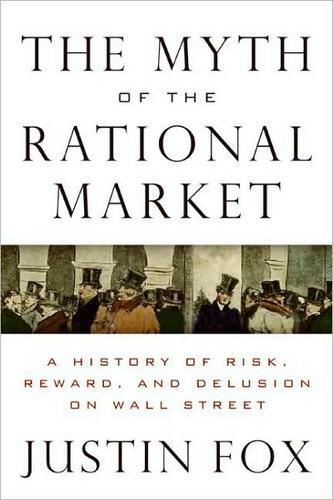
The Myth of the Rational Market: A History of Risk, Reward, and Delusion on Wall Street
by
Justin Fox
Published 29 May 2009
The Myth of the Rational Market A History of Risk, Reward, and Delusion on Wall Street Justin Fox To Allison Contents Introduction: It had been Working So Exceptionally Well Early Days 1. Irving Fisher Loses his Briefcase, and Then his Fortune The first serious try to impose reason and science upon the market comes in the early decades of the twentieth century. It doesn’t work out so well. 2. A Random Walk from Fred Macaulay to Holbrook Working Statistics and mathematics begin to find their way into the economic mainstream in the 1930s, setting the stage for big changes to come.
…
In the late 1920s, blinded in part by his own spectacular financial success, he became convinced that America’s masses of speculators and investors (not to mention its central bankers) were in fact following his advice. Nothing, therefore, could go wrong. Irving Fisher had succumbed to the myth of the rational market. It is a myth of great power—one that, much of the time, explains reality pretty well. But it is nonetheless a myth, an oversimplification that, when taken too literally, can lead to all sorts of trouble. Fisher was just the first in a line of distinguished scholars who saw reason and scientific order in the market and made fools of themselves on the basis of this conviction.
…
Visit www.AuthorTracker.com for exclusive information on your favorite HarperCollins author. Credits Jacket design by Victor Mingovits Jacket illustration: The Stock Exchange by Rougeron-Vignerot, courtesy Bibliotheque des Arts Decoratifs, Paris, France/Archives Charmet/The Bridgeman Art Library Copyright THE MYTH OF THE RATIONAL MARKET. Copyright © 2009 by Justin Fox. All rights reserved under International and Pan-American Copyright Conventions. By payment of the required fees, you have been granted the non-exclusive, non-transferable right to access and read the text of this e-book on-screen. No part of this text may be reproduced, transmitted, down-loaded, decompiled, reverse engineered, or stored in or introduced into any information storage and retrieval system, in any form or by any means, whether electronic or mechanical, now known or hereinafter invented, without the express written permission of HarperCollins e-books.
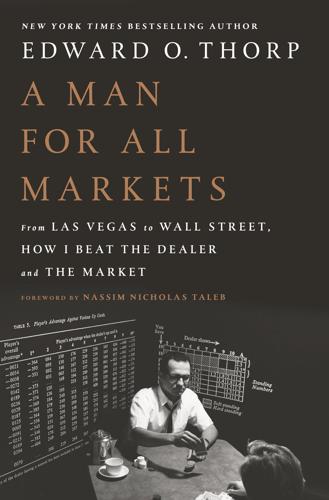
A Man for All Markets
by
Edward O. Thorp
Published 15 Nov 2016
Actually, it invests in each stock proportionally to the market value of the so-called float, which is the estimated fraction of freely trading shares, as opposed to shares being held which are not available for trading. The difference in performance between the two methods has been negligible. it first appeared Justin Fox, The Myth of the Rational Market, page 119, reports that Ben Graham, in 1962, pointed out that investment funds as a whole shouldn’t expect to beat the market “because in a significant sense they…are the market.” the clearest exposition Sharpe, William, “The Arithmetic of Active Management,” Financial Analyst’s Journal, Vol. 47, No. 1, pp. 7–9, January/February, 1991.
…
CHAPTER 26 beat the market This sounds nonsensical at first. What it means is that no one has any information whatsoever that has predictive value. to the contrary They display the well-known characteristic known as cognitive dissonance. and hundreds of books An excellent history of these meanderings is Justin Fox’s book The Myth of the Rational Market. all the future earnings Interpreted as net value paid out or accumulated for the benefit of a sole owner. on inside information As chronicled by James Stewart in Den of Thieves, Connie Bruck in The Predators’ Ball, and others. this type profitably Tobias, Andrew, Money Angles, Simon and Schuster, New York, 1984, pp. 71–72.
…
Bogle on Mutual Funds: New Perspectives for the Intelligent Investor. Burr Ridge, IL: Irwin, 1994. Edwardothorp.com. View articles written by the author. Feller, William. An Introduction to Probability Theory and Its Applications, Volume I. New York: Wiley, 1957, 1968. Fox, Justin. The Myth of the Rational Market: A History of Risk, Reward, and Delusion on Wall Street. New York: Harper Business, 2009. Griffin, Peter A. Introduction. The Theory of Blackjack: The Compleat Card Counter’s Guide to the Casino Game of 21. Las Vegas, NV: Huntington, 1995, 1999. Gross, William H. Bill Gross on Investing.

Adam Smith: Father of Economics
by
Jesse Norman
Published 30 Jun 2018
A highly readable overview of the history is Justin Fox, The Myth of the Rational Market, Harriman House 2009 Information incentives and efficient markets: see Sanford J. Grossman and Joseph E. Stiglitz, ‘On the Impossibility of Informationally Efficient Markets’, American Economic Review, 70.3, 1980 ‘There is no other proposition in economics which has more solid empirical evidence’: Michael Jensen, ‘Some Anomalous Evidence Regarding Market Efficiency’, Journal of Financial Economics, 6.2–3, 1978. Jensen’s views have since undergone considerable modification; see Fox, The Myth of the Rational Market, Ch. 15 ff. Slave trade and Scotland: the old view that Scotland had little to do with the slave trade has now been exploded.
…
Riecken and Stanley Schachter, When Prophecy Fails, University of Minnesota Press 1956 Fleischaker, Samuel, On Adam Smith’s Wealth of Nations, Princeton University Press 2004 Folbre, Nancy, Greed, Lust and Gender: A History of Economic Ideas, Oxford University Press 2009 Force, Pierre, Self-Interest before Adam Smith: A Genealogy of Economic Science, Cambridge University Press 2003 Forman-Barzilai, Fonna, Adam Smith and the Circles of Sympathy, Cambridge University Press 2010 Foucault, Michel, The Order of Things: An Archaeology of the Human Sciences, repr. Routledge 2002 Fox, Justin, The Myth of the Rational Market, Harriman House 2009 Friedman, Milton, Essays in Positive Economics, University of Chicago Press 1953 Frydman, Roman and Michael D. Goldberg, Imperfect Knowledge Economics, Princeton University Press 2007 Galbraith, J. K., A History of Economics: The Past as the Present, Penguin 1989 Garber, Peter, Famous First Bubbles: The Fundamentals of Early Manias, MIT Press 2000 Gibbon, Edward, Memoirs of my Life, A.
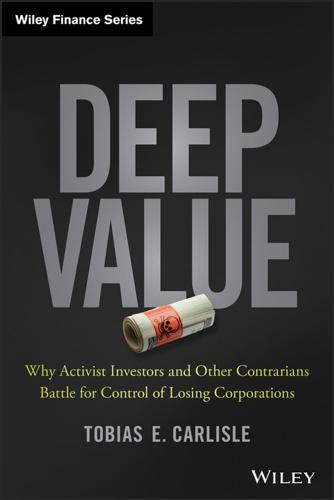
Deep Value
by
Tobias E. Carlisle
Published 19 Aug 2014
Security Analysis: The Classic 1934 Edition. (New York: McGraw-Hill) 1996. 32. Ibid. 33. Edward Chancellor. Devil Take the Hindmost: A History of Financial Speculation (New York: Penguin Group) 2000. 34. Ibid. 35. Ibid. 36. Ibid. 37. Sobel, 1984. 38. Ibid. Trading in Glamour: The Conglomerate Era 117 39. Justin Fox. The Myth of the Rational Market: A History of Risk, Reward, and Delusion on Wall Street. (New York: HarperCollins) 2009. 40. John. C. Bogle. “Statement of John C. Bogle to the United States Senate Governmental Affairs Subcommittee,” November 3, 2003. Available at http:// www.vanguard.com/bogle_site/sp20031103.html. 41.
…
C., 75 Lee, Jimmy, 157, 159 Lehman Brothers, 99–100 Leithner, Chris, 117 liquidation values, 22 liquidations, 189–191 The Little Book That Beats The Market, 57, 59–60, 75 Litton Industries, 99–107 Litton, Charles, 100–101 Loeb, Daniel, 191–193, 214 London Stock Exchange, 26 Loomis, Carol, 97 loser portfolio, 81, 88 Loughran, Tim, 64–65, 68, 75 low-quality stocks, high–quality vs., 195–198 Lowe, Janet, 51–52, 75 Lurie, Stanley, 6 M Magic Formula, 57, 195 analysis of, 58–63 Mann, Jake, 117 margin of safety, 21 Margin of Safety, 24, 28–30, 34, 149 market price, intrinsic value and, 30 Marsh, Paul, 87, 97 220 INDEX Marvell, Andrew, 1 Mauboussin, Michael J., 69–75, 210 McConnell, John J., 168 mean regression, 79–80 mean reversion finance and, 80–85 return on invested capital and, 69–74 mean-reverting qualitative elements, 31–33 Means, Gardiner, 4–5, 13, 17 MedImmune, 173 Meehl, Paul, 141 Mennella, Noelle, 186 Mesa Petroleum, 151–160 Miller, Frank J., 97 Mlodinow, Leonard, 110, 117 The Modern Corporation and Private Property, 17 Mohanty, Sunil, 26, 30, 34, 148 The Money Masters, 116 Montier, James, 26–28, 34, 59, 62, 75, 145, 149 Mooradian, Robert M., 186, 214 Munger, Charlie, 35–38, 41–43 Muscarella, Chris J., 168 The Myth of the Rational Market, 117 ownership problems, 22 Oxman, Jeffrey, 26, 30, 34, 148 N National Airlines, 12 net current asset value, 20 net current assets, 15, 189–191 net nets, 21 net operating profit after tax (NOPAT), 72–73 The New Financial Capitalists, 160–161, 168 New Zealand Stocks and Shares, 119–121, 167 Newberg, Bruce, 54, 75 Nicolais, Mike, 154 NOPAT.

Zero-Sum Future: American Power in an Age of Anxiety
by
Gideon Rachman
Published 1 Feb 2011
Bob Woodward, Maestro (New York: Simon & Schuster, 2000). 2. Alan Greenspan, The Age of Turbulence: Adventures in a New World (London: Penguin, 2007), 97. Greenspan tells this story against himself in his autobiography. 3. Ibid., 40. 4. Ibid., 41. 5. Ibid., 52. 6. Ibid., 15. 7. Ibid., 179. 8. Justin Fox, The Myth of the Rational Market: A History of Risk, Reward, and Delusion on Wall Street (New York: HarperCollins, 2009), xii. 9. Greenspan, Age of Turbulence, 370. 10. Ibid., 199. 11. Fox, Myth of the Rational Market, xii. 12. Quoted in Gillian Tett, Fool’s Gold (London: Little, Brown, 2009), 36. 13. Greenspan, Age of Turbulence, 372. 14.
…
The best thing to read on Alan Greenspan is Greenspan’s own surprisingly compulsive memoir, The Age of Turbulence: Adventures in a New World (Penguin, 2007). There have now been a great many books on the origins of the crash of 2008 and its economic lessons. Two of my favorites are Gillian Tett’s Fool’s Gold (Little, Brown, 2006) and Justin Fox’s The Myth of the Rational Market (HarperCollins, 2009). The defining text capturing the optimism generated by the interplay between the technological revolution and globalization is Thomas Friedman’s The World Is Flat (Penguin, 2005). The optimism about the rise of Asia during this period is caught both by Kishore Mahbubani’s The New Asian Hemisphere: The Irresistible Shift of Global Power to the East (PublicAffairs, 2008) and Martin Jacques’s When China Rules the World: The Rise of the Middle Kingdom and the End of the Western World (Penguin, 2009).

13 Bankers: The Wall Street Takeover and the Next Financial Meltdown
by
Simon Johnson
and
James Kwak
Published 29 Mar 2010
Inside,” The New York Times, October 10, 2009, available at http://www.nytimes.com/2009/10/11/business/11hohlt.html. 38. Pub. L. 96-221. Interest ceilings on deposit accounts were phased out in Title II. State usury laws were preempted in Title V. 39. Geisst, Wall Street, supra note 33, at 327. 40. On academic finance, see Justin Fox, The Myth of the Rational Market: A History of Risk, Reward, and Delusion on Wall Street (New York: Harper Business, 2009); John Cassidy, How Markets Fail: The Logic of Economic Calamities (New York: Farrar, Straus & Giroux, 2009), chapter 7; Peter Bernstein, Capital Ideas: The Improbable Origins of Modern Wall Street (New York: Free Press, 1992); and Peter Bernstein, Capital Ideas Evolving (Hoboken, NJ: Wiley, 2007). 41.
…
The Greatest Trade Ever: The Behind-the-Scenes Story of How John Paulson Defied Wall Street and Made Financial History. New York: Broadway Business, 2009. Academic Economics and the Financial Crisis Cassidy, John. How Markets Fail: The Logic of Economic Calamities. New York: Farrar, Straus & Giroux, 2009. Fox, Justin. The Myth of the Rational Market: A History of Risk, Reward, and Delusion on Wall Street. New York: Harper Business, 2009. Economic and Policy Analyses Goodman, Peter S. Past Due: The End of Easy Money and the Renewal of the American Economy. New York: Henry Holt, 2009. Hacker, Jacob S., and Paul Pierson. Winner-Take-All Politics: How Washington Made the Rich Richer—And Turned Its Back on the Middle Class.
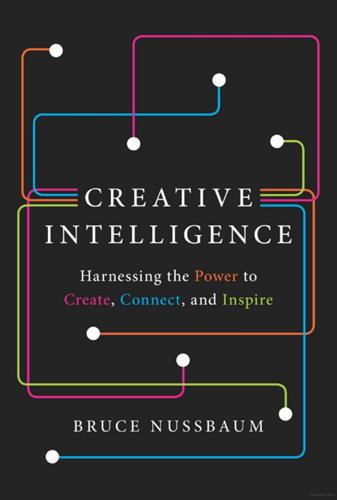
Creative Intelligence: Harnessing the Power to Create, Connect, and Inspire
by
Bruce Nussbaum
Published 5 Mar 2013
This distinction forms a major theme in the course we co-teach at Parsons. Ray Ball, “The Global Financial Crisis and the Efficient Market Hypothesis: What Have We Learned?” University of Chicago, Journal of Applied Corporate Finance, vol. 21, no. 4, 2009; Siegel, “Efficient Market Theory and the Crisis”; Roger Lowenstein, “Book Review: The Myth of the Rational Market by Justin Fox,” Washington Post, June 7, 2009, accessed September 13, 2012, http://www.washingtonpost.com/wp-dyn/ content/article/2009/06/05/AR2009060502053.html. 228 “black swans”: Nassim Nicholas Taleb, The Black Swan: The Impact of the Highly Improbable (New York: Random House, 2007). 228 By excluding uncertainty: Frank H.
…
id=5835269. 232 In a 2010 interview with Martin Wolf: Wolf and Giles, “Transcript: Larry Summers Interview.” 232 Summers was, after all: Stephen Labaton, “Congress Passes Wide-Ranging Bill Easing Bank Laws,” New York Times, November 5, 1999, accessed September 14, 2012, http://www.nytimes.com/1999/11/05/business/ congress-passes-wide-ranging-bill-easing-bank-laws.html; Charles Ferguson, “Larry Summers and the Subversion of Economics,” Chronicle of Higher Economics, October 3, 2010, accessed September 14, 2012, http://chronicle.com/article/Larry-Summersthe/124790/; Rana Foroohar, “Larry Summers: No Regrets on Deregulation,” Time Business, April 12, 2011, accessed September 14, 2012, http://business.time.com/2011/04/12/ larry-summers-no-regrets-on-deregulation/. 232 In 1999, Summers, along with: Cyrus Sanati, “10 Years Later, Looking at Repeal of Glass-Steagall,” DealBook, November 12, 2009, accessed September 14, 2012, http://dealbook.nytimes.com/2009/11/12/10 -years-later-looking-at-repeal-of-glass-steagall/. 232 the Depression-era regulation: Labaton, “Congress Passes Wide-Ranging Bill Easing Bank Laws.” 232 calling the repeal “historic”: Sanati, “10 Years Later.” 232 Perhaps no one believed: Justin Fox, “The Myth of the Rational Market,” Time, June 22, 2009, accessed September 14, 2012, http://www.time.com/time/magazine/ article/0,9171,1904153,00.html. 232 But in October 2008, Greenspan: Edmund L. Andrews, “Greenspan Concedes Error on Regulation,” New York Times, October 23, 2008, accessed September 14, 2012, http://www.nytimes.com/2008/10/24/ business/economy/24panel.html. 232 “Those of us who have looked: Kara Scannell and Sudeep Reddy, “Greenspan Admits Errors to Hostile House Panel,” Wall Street Journal, October 24, 2008, accessed September 14, 2012, http://online.wsj.com/article/ SB122476545437862295.html. 232 Greenspan was criticized: Andrews, “Greenspan Concedes Error on Regulation.” 233 Back in the mid-nineties: Katrina Brooker, “Citi’s Creator, Alone with His Regrets,” New York Times, January 2, 2012, accessed September 13, 2012, http://www.nytimes.com/2010/01/03/ business/economy/03weill.html. 233 On July 25, 2012: “Wall Street Legend Sandy Weill: Break Up the Big Banks,” CNBC Report, July 25, 2012, http://www.cnbc.com/id/48315170, accessed September 13, 2012. 233 from 1977 to 2008: Roger Martin, “The Age of Customer Capitalism,” Harvard Business Review, January 2010, http://hbr.org/2010/01/ the-age-of-customer-capitalism/ar/1. 233 Compare that with: Ibid. 234 In 2009, Michael Mandel: I’ve known and respected Mike Mandel for all the years we worked together at BusinessWeek and the years thereafter.
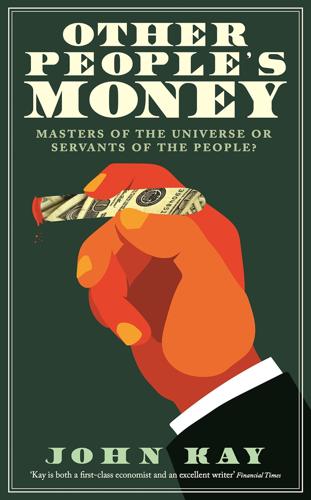
Other People's Money: Masters of the Universe or Servants of the People?
by
John Kay
Published 2 Sep 2015
Ramsey, F.P., 1926, ‘Truth and Probability’, in Ramsey, F.P., 1931, The Foundations of Mathematics and Other Logical Essays, ed. Braithwaite, R.B., London, Kegan, Paul, Trench, Trubner & Co. 27. Buffett, W., 1988, Chairman’s Letter to the Shareholders of Berkshire Hathaway Inc. 28. Fox, J., 2009, The Myth of the Rational Market, New York, Harper Business, pp. 86–8. 29. Isaacson, W., 2013, Steve Jobs: The Exclusive Biography, New York, Little Brown. 30. Hair, P.E.H., 1971, ‘Deaths from Violence in Britain: A Tentative Survey’, Population Studies, 25 (1), pp. 5–24. 31. Adams, J., 1995, Risk: The Policy Implications of Risk Compensation and Plural Rationalities, London, Routledge. 32.
…
House of Commons Treasury Committee, Independent Commission on Banking. Financial Times, 2009, ‘Government’s Response Like That of a Rowdy Drinker in a Bar Brawl’, 5 July. Fitzgerald, F.S., 1925, The Great Gatsby, New York, Charles Scribner’s Sons. Flyvberg, B., 2003, Megaprojects and Risk, Cambridge, Cambridge University Press. Fox, J., 2009, The Myth of the Rational Market, New York, Harper Business. Francis, J., 1850, ‘Chronicles and Characters of the Stock Exchange’, The Church of England Quarterly Review, 27 (6), pp. 128–55. Friedman, M., and Friedman, R.D., 1980, Free to Choose, San Diego, CA, Harcourt. Galbraith, J.K., 1954, The Great Crash, Boston, MA, Houghton Mifflin.
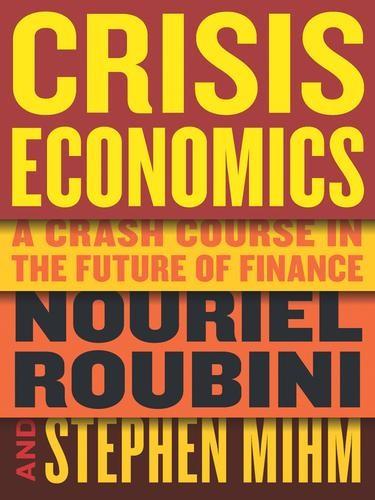
Crisis Economics: A Crash Course in the Future of Finance
by
Nouriel Roubini
and
Stephen Mihm
Published 10 May 2010
Davis, eds., A Companion to the History of Economic Thought (Oxford: Blackwell, 2003), 112-29; Alessandro Roncaglia, The Wealth of Ideas: A History of Economic Thought (Cambridge, U.K.: Cambridge University Press, 2005), 179-243, 278-96, 322-83. 40 Louis Bachelier: Louis Bachelier, “Théorie de la spéculation,” in Annales Scientifiques de l’École Normale Supérieure 3 (1900): 21-86; Justin Fox, The Myth of the Rational Market: A History of Risk, Reward, and Delusion on Wall Street (New York: Harper Business, 2009), 6-8. 40 “The consensus of judgment . . .”: Lawrence quoted in John Kenneth Galbraith, The Great Crash, 1929 (Boston: Houghton Mifflin, 1954), 75. 41 postwar academic departments: Fox, Myth of the Rational Market, 89-107. 41 “random walk” theory: Burton G.
…
London: Centre for Economic Policy Research, 2009. Online at http://www.voxeu.org/index.php?q=node/3079. Ferguson, Niall. The Ascent of Money: A Financial History of the World. New York: Penguin Press, 2008. Fisher, Irving. “The Debt-Deflation Theory of Great Depressions.” Econometrica 1 (1933): 337-57. Fox, Justin. The Myth of the Rational Market: A History of Risk, Reward, and Delusion on Wall Street. New York: Harper Business, 2009. Frank, Nathaniel, and Heiko Hesse. “Financial Spillovers to Emerging Markets During the Global Financial Crisis.” IMF Working Paper no. 09/104, May 2009. Online at http://imf.org/external/pubs/ft/wp/2009/wp09104.pdf.

Pity the Billionaire: The Unexpected Resurgence of the American Right
by
Thomas Frank
Published 16 Aug 2011
Just as readers of the thirties snapped up books trashing the great capitalists and picking apart classical economics, so did the book-buying public of our own time seem ready to read about the folly of orthodoxy. In 2009, a Time magazine columnist named Justin Fox scored an unlikely hit with The Myth of the Rational Market, a careful takedown of academic economics. Michael Lewis, who had once made heroes of tycoons, now walked readers through the descending levels of the Wall Street ripoff in The Big Short. And there was a sudden mania for Great Depression comparisons: Paul Krugman reissued his 1999 work, The Return of Depression Economics—this time they had truly returned—and a book about the blundering central bankers of the twenties actually made the bestseller list.

Quantitative Value: A Practitioner's Guide to Automating Intelligent Investment and Eliminating Behavioral Errors
by
Wesley R. Gray
and
Tobias E. Carlisle
Published 29 Nov 2012
Available at www7.gsb.columbia.edu/alumni/news/hermes/print-archive/superinvestors. 17. Benjamin Graham, “Should Rich but Losing Corporations Be Liquidated?” Reprinted on Forbes.com, December 27, 1999. Available at http://www.forbes.com/forbes/1999/1227/6415410a.html. 18. Justin Fox, The Myth of the Rational Market: A History of Risk, Reward, and Delusion on Wall Street (New York: HarperBusiness, 2009). 19. Ibid. 20. Benjamin Graham, The Intelligent Investor: A Book of Practical Counsel, 4th ed. (New York: Harper & Row, 1986). 21. Warren Buffett, “Shareholder Letter,” Berkshire Hathaway, Inc.

Currency Wars: The Making of the Next Gobal Crisis
by
James Rickards
Published 10 Nov 2011
The Financial Crisis Inquiry Report: Final Report of the National Commission on the Causes of the Financial and Economic Crisis in the United States. New York: Public Affairs, 2011. Findlay, Ronald, and Kevin H. O’Rourke. Power and Plenty: Trade, War, and the World Economy in the Second Millennium. Princeton: Princeton University Press, 2007. Fox, Justin. The Myth of the Rational Market. New York: HarperCollins, 2009. Friedman, Milton, and Anna Jacobson Schwartz. A Monetary History of the United States, 1867–1960. Princeton: Princeton University Press, 1963. Frydman, Roman, and Michael D. Goldberg. Imperfect Knowledge Economics: Exchange Rates and Risks. Princeton: Princeton University Press, 2007.

Why Aren't They Shouting?: A Banker’s Tale of Change, Computers and Perpetual Crisis
by
Kevin Rodgers
Published 13 Jul 2016
Chapter 8 1 ‘Forms and paradoxes of principles-based regulation’, Julia Black, Professor of Law and Research Associate, Centre for the Analysis of Risk and Regulation, London School of Economics and Political Science, Capital Markets Law Journal, 3/4, 10 September 2008, http://www.lse.ac.uk/collections/law/staff%20publications%20full%20text/black/forms%20and%20paradoxes%20of%20pbr%202008.pdf 2 The Age of Turbulence, Alan Greenspan, Penguin Books, 2008, p52. 3 ‘Testimony of Chairman Alan Greenspan, The regulation of OTC derivatives, Before the Committee on Banking and Financial Services, U.S. House of Representatives’, 24 July 1998, http://www.federalreserve.gov/boarddocs/testimony/1998/19980724.htm 4 For more on this fascinating topic, see The Myth of the Rational Market, Justin Fox, Harper Business, 2011. 5 The End of History and the Last Man, Francis Fukuyama, Penguin Books, 1992. 6 ‘The Financial Crisis and the Role of Federal Regulators’, Committee on Oversight and Government Reform, House of Representatives, 23 October 2008, http://www.gpo.gov/fdsys/pkg/CHRG-110hhrg55764/html/CHRG-110hhrg55764.htm 7 Stabilizing an Unstable Economy, Professor Hyman Minsky, McGraw-Hill Professional, 1986. 8 ‘Working Paper No. 74, The Financial Instability Hypothesis’, Hyman Minsky, The Jerome Levy Economics Institute of Bard College, May 1992, http://www.levyinstitute.org/pubs/wp74.pdf 9 Unsettled Account: The Evolution of Banking in the Industrialised World since 1800, Richard S.

The Physics of Wall Street: A Brief History of Predicting the Unpredictable
by
James Owen Weatherall
Published 2 Jan 2013
Hoboken, NJ: John Wiley and Sons. Forbes magazine. 2011. “The World’s Billionaires 2011.” Available at http://www.forbes.com/lists/2011/10/billionaires_2011.html. Forfar, David O. 2007. “Fischer Black.” Available at http://www.history.mcs.standrews.ac.uk/Biographies/Black_Fischer.html. Fox, Justin. 2009. The Myth of the Rational Market. New York: Harper Business. French, Craig W. 2003. “The Treynor Capital Asset Pricing Model.” Journal of Investment Management 1 (2): 60–72. Galison, Peter. 1997. Image and Logic: A Material Culture of Microphysics. Chicago: University of Chicago Press. — — — . 2003. Einstein’s Clocks, Poincaré’s Maps: Empires of Time.
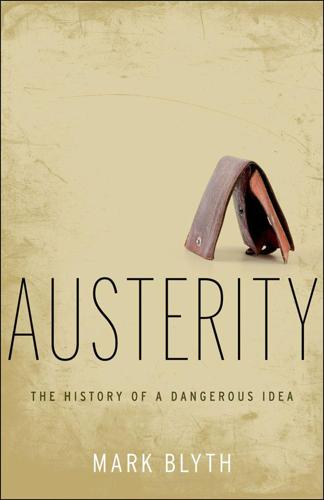
Austerity: The History of a Dangerous Idea
by
Mark Blyth
Published 24 Apr 2013
Andrew Haldane, “Why Banks Failed the Stress Test,” (speech at the Marcus-Evans Conference on Stress-Testing, London, February 9–10, 2009). 28. Three recent books have done a great job of showing us how the ideas that constitute modern finance, its theoretical structure, were a huge part of what went wrong. Justin Fox’s The Myth of the Rational Market (2009), John Cassidy’s How Markets Fail (2009), and John Quiggin’s Zombie Economics (2010) lay out in great detail how the economic theory of the past thirty years was constructed, what it presumed about the world, and why those ideas failed in the 2007–2008 crisis. In what follows, I draw on their work and on my own prior work on the subject.

Unfinished Business
by
Tamim Bayoumi
Fiordelisi (2009): Franco Fiordelisi, Mergers and Acquisitions in European Banking, Palgrave Macmillan Studies in Banking and Financial Institutions, Palgrave Macmillan, London and New York, 2009. Focarelli and Pozzolo (2001): Dario Focarelli and Alberto Pozzolo, “The Patterns of Cross-Border Bank Mergers and Shareholdings in OECD Countries”, Journal of Banking and Finance, Vol. 25, No. 12 (December 2001), pp. 2305–37. Fox (2009): Justin Fox, The Myth of the Rational Market, Harper Business, New York, 2009. Friedman (2006): Benjamin M. Friedman, The Moral Consequences of Economic Growth, Alfred Knopf, New York, 2006. Gagnon (2012): Joseph Gagnon, “European Monetary Unification: Precocious or Premature?”, Chapter 10 in Jacob Funk Kirkegaard, Nicolas Véron, and Guntram B.

A Random Walk Down Wall Street: The Time-Tested Strategy for Successful Investing
by
Burton G. Malkiel
Published 10 Jan 2011
Critics believe that such events stretch the credibility of the efficient-market theory beyond the breaking point. The financial press has been unambiguous in its judgment. The Wall Street Journal opined that the efficient-market theory was a “remarkable error.” BusinessWeek described the theory as a “failure.” Justin Fox of Time, author of The Myth of the Rational Market, claimed that the efficient-market hypothesis (EMH) has deluded investors and played a major role in the worldwide credit crisis of 2008–09. Certainly the behavioral theorists, whose work was described in chapter 10, are highly skeptical that markets are efficient. The behavioralists chide their efficient-market brethren for blindly accepting that the stock market behaves rationally.
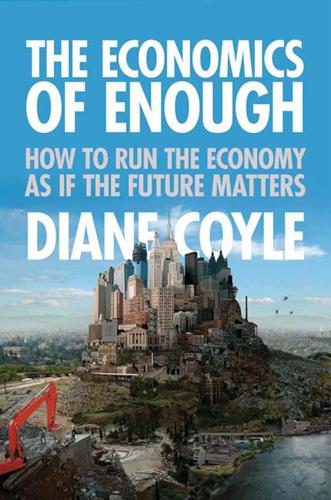
The Economics of Enough: How to Run the Economy as if the Future Matters
by
Diane Coyle
Published 21 Feb 2011
“You Don’t Need to Sell a Million to Make a Mint.” Sunday Times (London), 8 November. Ehrlich, Paul. 1968. The Population Bomb. New York: Ballantine. Financial Times. 2009. “India Opts for Voluntary Cuts on Emissions.” Fitzgerald, F. Scott. 1925. The Great Gatsby. New York, Scribner’s. Fox, Justin. 2010. The Myth of the Rational Market: A History of Risk, Reward, and Delusion on Wall Street. New York: HarperCollins. Frank, Robert. 1999. Luxury Fever: Money and Happiness in an Era of Excess. New York: Free Press. Frank, Robert. 2007. “Why Not Shift the Burden to Big Spenders?” New York Times, 7 October. Frank, Robert, and Philip Cook. 1995.
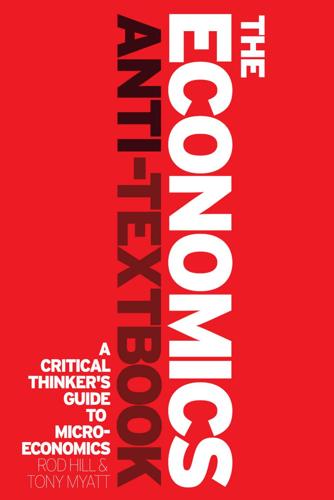
The Economics Anti-Textbook: A Critical Thinker's Guide to Microeconomics
by
Rod Hill
and
Anthony Myatt
Published 15 Mar 2010
Of particular interest is his 2003 book, The Roaring Nineties, since this shows the pervasiveness of imperfect information, and how deregulation created the wrong incentive structure that led to the scandals and the bubble economy of the 1990s. The lessons still haven’t been learnt. Justin Fox’s book, The Myth of the Rational Market: A history of risk, reward, and delusion on Wall Street (2009) is an entertaining account of the rise of the efficient market hypothesis and its ultimate failure. Addendum: what about the efficiency of asset markets? One way to summarize the content of mainstream textbooks is this: if all markets existed, and were perfectly competitive, the economy would be in a Pareto optimal situation – it wouldn’t be possible to make anyone better off without making someone else worse off.

Strategy: A History
by
Lawrence Freedman
Published 31 Oct 2013
Kathleen Eisenhardt, “Agency Theory: An Assessment and Review,” Academy of Management Review 14, no. 1 (1989): 57–74. 2. Justin Fox, The Myth of the Rational Market: A History of Risk, Reward, and Delusion on Wall Street (New York: Harper, 2009), 159–162. 3. Michael C. Jensen and William H. Meckling, “Theory of the Firm: Managerial Behavior, Agency Costs and Ownership Structure,” Journal of Financial Economics 3 (1976): 302–360. 4. Michael C. Jensen, “Organization Theory and Methodology,” The Accounting Review 58, no. 2 (April 1983): 319–339. 5. Jensen, “Takeovers: Folklore and Science,” Harvard Business Review (November–December 1984), 109–121. 6. Cited by Fox, The Myth of the Rational Market, 274. 7. Paul M.
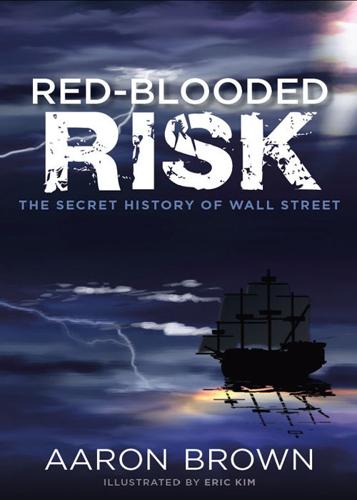
Red-Blooded Risk: The Secret History of Wall Street
by
Aaron Brown
and
Eric Kim
Published 10 Oct 2011
For the twentieth and twenty-first centuries we have The New Lombard Street: How the Fed Became the Dealer of Last Resort by Perry Mehrling, Exorbitant Privilege: The Rise and Fall of the Dollar and the Future of the International Monetary System by Barry Eichengreen, Capital Ideas: The Improbable Origins of Modern Wall Street by Peter Bernstein, The Death of the Banker: The Decline and Fall of the Great Financial Dynasties and the Triumph of the Small Investor by Ron Chernow, The Greed Merchants: How the Investment Banks Played the Free Market Game by Philip Augar, and The Myth of the Rational Market: A History of Risk, Reward, and Delusion on Wall Street by Justin Fox. The bible of advantage gamblers is James Grosjean’s Beyond Counting: Exploiting Casino Games from Blackjack to Video Poker. Peter Griffin was one of the best mathematician/gamblers. He wrote The Theory of Blackjack: The Compleat Card Counter’s Guide to the Casino Game of 21.

Misbehaving: The Making of Behavioral Economics
by
Richard H. Thaler
Published 10 May 2015
“Hindsight ≠ Foresight: The Effect of Outcome Knowledge on Judgment Under Uncertainty.” Journal of Experimental Psychology: Human Perception and Performance 1, no. 3: 288. Fisher, Irving. 1930. The Theory of Interest: As Determined by Impatience to Spend Income and Opportunity to Invest It. New York: MacMillan. Fox, Justin. 2009. The Myth of the Rational Market: A History of Risk, Reward, and Delusion on Wall Street. New York: HarperCollins. Frank, Robert H., Thomas Gilovich, and Dennis T. Regan. 1993. “Does Studying Economics Inhibit Cooperation?” Journal of Economic Perspectives 7, no. 2: 159–71. Frederick, Shane, George Loewenstein, and Ted O’Donoghue. 2002.
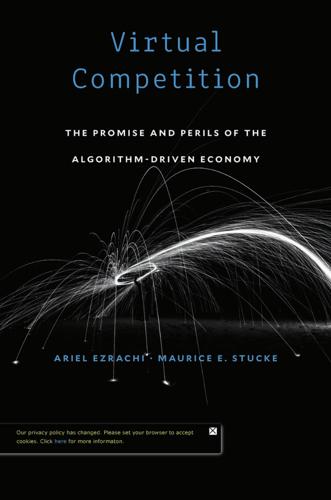
Virtual Competition
by
Ariel Ezrachi
and
Maurice E. Stucke
Published 30 Nov 2016
See, for example, Robert H. Bork, The Antitrust Paradox: A Policy at War with Itself (New York: Basic Books, 1978); Richard A. Posner, “The Chicago School of Antitrust Analysis,” University of Pennsylvania Law Review 127 (1978): 925, 933. 9. Posner, “The Chicago School of Antitrust Analysis.” 10. Justin Fox, The Myth of the Rational Market (New York: Harper Business/ HarperCollins, 2009), 89–107. 11. As President Reagan told the nation, “government is not the solution to our problem; government is the problem”; Ronald Reagan, First Inaugural Address (January 20, 1981), http://www.reaganlibrary.com/reagan/speeches /first.asp. 12.

Competition Overdose: How Free Market Mythology Transformed Us From Citizen Kings to Market Servants
by
Maurice E. Stucke
and
Ariel Ezrachi
Published 14 May 2020
Culligan International Co., 415 F.3d 620, 623 (7th Cir. 2005). 24.A.A. Poultry Farms, Inc. v. Rose Acre Farms, Inc., 881 F.2d 1396, 1402 (7th Cir. 1989). 25.Ball Memorial Hospital, Inc. v. Mutual Hospital Insurance, Inc., 784 F.2d 1325, 1338 (7th Cir. 1986). 26.Kumpf v. Steinhaus, 779 F.2d 1323, 1326 (7th Cir. 1985). 27.Justin Fox, The Myth of the Rational Market: A History of Risk, Reward, and Delusion on Wall Street (New York: Harper Business, 2009), 192; Andrei Shleifer, Inefficient Markets: An Introduction to Behavioral Finance (New York: Oxford University Press, 2000), 2–5. 28.Joseph Ratzinger Benedict XVI, “Church and Economy: Responsibility for the Future of the World Economy,” Communio International Catholic Review 13, no. 3 (Fall 1986): 199, 200, https://www.communio-icr.com/files/ratzinger13-3.pdf. 29.Robert H.
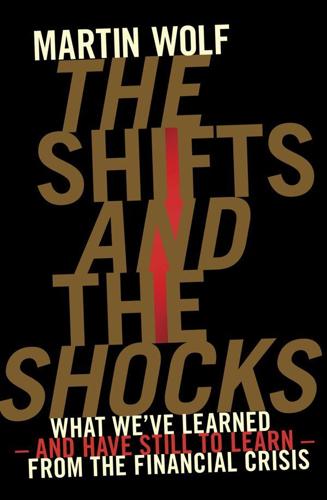
The Shifts and the Shocks: What We've Learned--And Have Still to Learn--From the Financial Crisis
by
Martin Wolf
Published 24 Nov 2015
‘The Debt-Deflation Theory of Great Depressions’, Econometrica, vol. 1, no. 4 (October 1933), pp. 337–57. http://fraser.stlouisfed.org/docs/meltzer/fisdeb33.pdf. Forstater, Matthew. Functional Finance and Full Employment: Lessons from Lerner for Today’, Working Paper No. 272, The Jerome Levy Economics Institute, July 1999. Fox, Justin. The Myth of the Rational Market: A History of Risk, Reward, and Delusion on Wall Street (New York: HarperCollins, 2009). Frank, Robert H. and Philip J. Cook. The Winner-Take-All Society: Why the Few at the Top Get So Much More than the Rest of Us (London and New York: Penguin, 1996). Frydman, Roman and Michael D. Goldberg.

Them And Us: Politics, Greed And Inequality - Why We Need A Fair Society
by
Will Hutton
Published 30 Sep 2010
Rickards, ‘The Risks of Financial Modeling: VaR and the Economic Meltdown’, testimony before the Subcommittee on Investigations and Oversight Committee on Science and Technology, US House of Representatives, 10 September 2009. 38 Benoit Mandelbrot (2008) The (Mis)Behavior of Markets: A Fractal View of Risk, Ruin and Reward, Profile Books. For another interesting example of cross-fertilisation, see Didier Sornette (2003) Why Stockmarkets Crash: Critical Events in Complex Financial Systems, Princeton University Press. 39 See Justin Fox (2009) The Myth of the Rational Market: A History of Risk, Reward, and Delusion on Wall Street, HarperBusiness. 40 The following example is paraphrased from Baseline Scenario: http://baselinescenario.com/2009/10/01/the-economics-of-models/. 41 Gillian Tett (2009) Fool’s Gold: How Unrestrained Greed Corrupted a Dream, Shattered Global Markets and Unleashed a Catastrophe, Little, Brown. 42 Lucien Bebchuk and Jesse Fried (2004) Pay without Performance: The Unfulfilled Promise of Executive Compensation, Harvard University Press. 43 Lucian Bebchuk and Holger Spamann (2009) ‘Regulating Bankers’ Pay’, Harvard Law and Economics Discussion Paper No. 641. 44 Jesse Eisinger, ‘London Banks, Falling Down’, Portfolio, 13 August 2008, at http://www.portfolio.com/views/columns/wall-street/2008/08/13/Problemsin-British-Banking-System/. 45 Philip Augar (2009) Chasing Alpha: How Reckless Growth and Unchecked Ambition Ruined the City’s Golden Decade, The Bodley Head. 46 Albert-Laszlo Baraasi (2002) Linked: The New Science of Networks, Basic Books.

In Pursuit of the Perfect Portfolio: The Stories, Voices, and Key Insights of the Pioneers Who Shaped the Way We Invest
by
Andrew W. Lo
and
Stephen R. Foerster
Published 16 Aug 2021
Journal of Financial Economics 5, no. 2: 115–46. Fenner, Elizabeth. 2013. “12 Questions for Nobel Prize Winner Eugene Fama.” Chicago Magazine, December 10, http://www.chicagomag.com/Chicago-Magazine/December-2013/Q-and-A-with-University-of-Chicago-Economist-Eugene-Fama/. Fox, Justin. 2009. The Myth of the Rational Market: A History of Risk, Reward, and Delusion on Wall Street. New York: HarperCollins. French, Craig W. 2003. “The Treynor Capital Asset Pricing Model.” Journal of Investment Management 1: 60–72. Friedman, Milton. 1976. “Milton Friedman—Biographical.” The Nobel Foundation, https://www.nobelprize.org/prizes/economic-sciences/1976/friedman/biographical/.

The Color of Money: Black Banks and the Racial Wealth Gap
by
Mehrsa Baradaran
Published 14 Sep 2017
The only exception was when black collective action increased the cost of discrimination by staging large-scale boycotts, but that was hardly what Friedman was referring to. 202. Justin Fox recounts the rise and eventual fall of rational and efficient market theories and the Chicago school’s embrace of them. Justin Fox, The Myth of the Rational Markets: A History of Risk, Reward, and Delusion on Wall Street (New York: Harper, 2009). 203. See generally, E. J. Dionne Jr., Why the Right Went Wrong: Conservatism—From Goldwater to Trump and Beyond (New York: Simon & Schuster, 2016). Dionne makes the case that the modern Republican Party is essentially the party of Goldwater. 204.
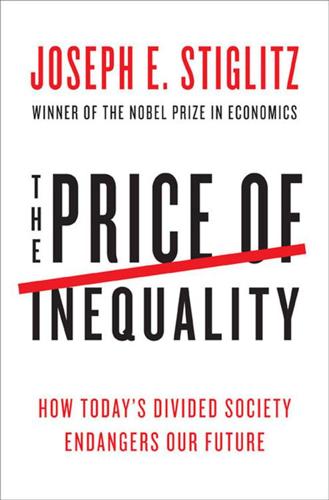
The Price of Inequality: How Today's Divided Society Endangers Our Future
by
Joseph E. Stiglitz
Published 10 Jun 2012
Stiglitz, “Information and Competitive Price Systems,” American Economic Review 66, no. 2 (May 1976): 246–53; and Sanford Grossman and J. E. Stiglitz, “On the Impossibility of Informationally Efficient Markets,” American Economic Review 70, no. 3 (June 1980): 393–408. 37. See Justin Fox, The Myth of the Rational Market (New York: Harper Business, 2009). 38. This was equivalent to a loss of more than a trillion dollars. The stocks of eight major companies in the S&P 500 (including Accenture) fell to one cent per share; the prices of other stocks (including Sotheby’s, Apple, and Hewlett-Packard) increased to over $100,000.

Manias, Panics and Crashes: A History of Financial Crises, Sixth Edition
by
Kindleberger, Charles P.
and
Robert Z., Aliber
Published 9 Aug 2011
Many are by journalists, including Gillian Tett, who wrote Fool’s Gold: How Unrestrained Greed Corrupted a Dream, Shattered Global Markets, and Unleashed a Catastrophe. Andrew Ross Sorkin brought out Too Big to Fail: The Inside Story of How Wall Street and Washington Fought to Save the Financial System – and Themselves. Roger Lowenstein authored The End of Wall Street, Justin Fox wrote The Myth of the Rational Market: A History of Risk, Reward, and Delusion on Wall Street, and Scott Patterson produced The Quants; How a New Breed of Math Whizzes Conquered Wall Street and Nearly Destroyed It. The theme of market irrationality is also explored in John Cassidy’s How Markets Fail; The Logic of Economic Calamities.
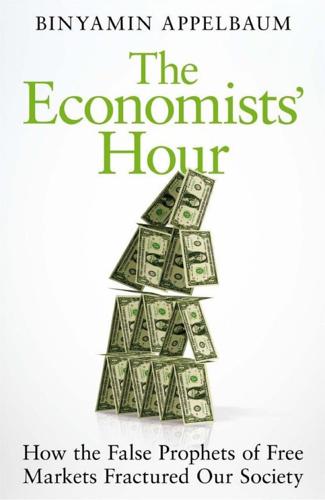
The Economists' Hour: How the False Prophets of Free Markets Fractured Our Society
by
Binyamin Appelbaum
Published 4 Sep 2019
Rubin was saying we couldn’t do it.” For a retrospective on the debate, see Noam Scheiber, The Escape Artists: How Obama’s Team Fumbled the Recovery (New York: Simon and Schuster, 2012). 38. “Over-the-Counter Derivatives,” Senate Committee on Agriculture, Nutrition and Forestry, July 30, 1998. 39. Justin Fox, The Myth of the Rational Market (New York: HarperCollins, 2009), 197. Summers can also claim credit for perhaps the second-best takedown of the efficient markets crowd: a 1984 presentation in which he described finance theory as akin to believing that the ketchup market operated under different rules than the rest of the world.

More Money Than God: Hedge Funds and the Making of a New Elite
by
Sebastian Mallaby
Published 9 Jun 2010
“It’s impossible to disseminate information exactly homogeneously,” Steinhardt says of the regulators’ efforts. Steinhardt interview, September 10, 2007. 48. Anise C. Wallace, “Pullback at Block Trading Desks,” New York Times, December 24, 1987, p. D1. 49. Dan Dorfman, “Sabbatical for a Superstar,” Esquire, August 29, 1978, p. 12. CHAPTER THREE: PAUL SAMUELSON’S SECRET 1. Justin Fox, The Myth of the Rational Market: A History of Risk, Reward, and Delusion on Wall Street, (New York: HarperCollins, 2009), p. 124. 2. Peter L. Bernstein, Capital Ideas Evolving (Hoboken, NJ: John Wiley & Sons, 2007), p. 113. 3. Samuelson explains, “Fama’s theory of the random walk and mine are not the same. Mine is that there are no easy pickings….
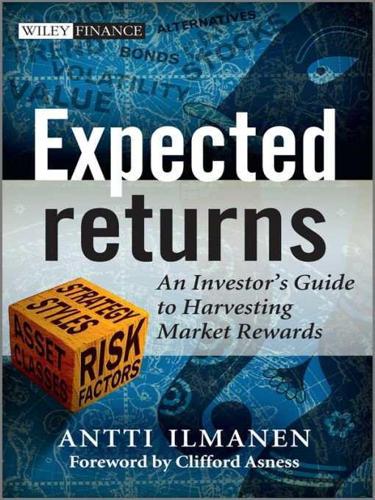
Expected Returns: An Investor's Guide to Harvesting Market Rewards
by
Antti Ilmanen
Published 4 Apr 2011
Figelman, Ilya (2007), “Stock return momentum and reversal,” Journal of Portfolio Management 34(1), 51–67. Figelman, Ilya (2008), “Expected return and risk of covered call strategies,” Journal of Portfolio Management 34(4), 81–97. Foresi, Silverio; and Lauren Wu (2005), “CrashOPhobia: A domestic fear or a worldwide concern?” Journal of Derivatives 13(2), 8–21. Fox, Justin (2009), The Myth of the Rational Market: A History of Risk, Reward, and Delusion on Wall Street, HarperBusiness. Francis, Jack Clark; and Roger G. Ibbotson (2009), “Contrasting real estate with comparable investments, 1978 to 2008,” Journal of Portfolio Management 36(1), 141–155. Franzoni, Francesco A.; Eric Nowak; and Ludovic Phalippou (2010), “Private equity and liquidity risk,” Swiss Finance Institute working paper.
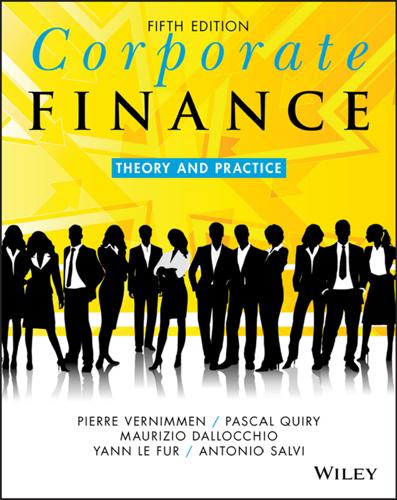
Corporate Finance: Theory and Practice
by
Pierre Vernimmen
,
Pascal Quiry
,
Maurizio Dallocchio
,
Yann le Fur
and
Antonio Salvi
Published 16 Oct 2017
The affirmative case, Financial Analysts Journal, 57(3), 15–29, May–June 2001. For more about empirical evidence and anomalies of efficient financial markets: R. Banz, The relationship between return and market value of common stock, Journal of Financial Economics, 9(1), 3–18, March 1981. J. Fox, The Myth of the Rational Market, Harper Business, 2009. M. Gibbons, H. Patrick, Day of the week effects and asset returns, Journal of Business, 54(4), 579–596, October 1981. D. Keim, Size-related anomalies and stock return seasonality: Further empirical evidence, Journal of Financial Economics, 12(1), 13–32, June 1983.